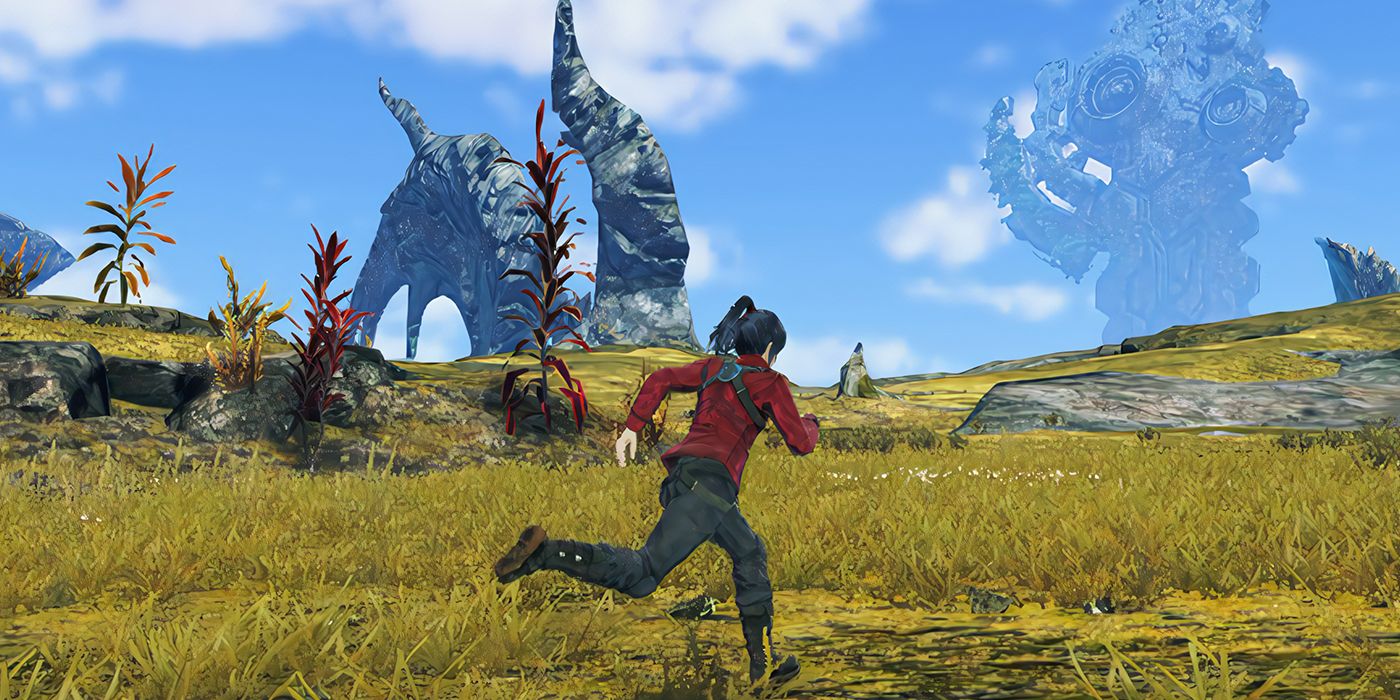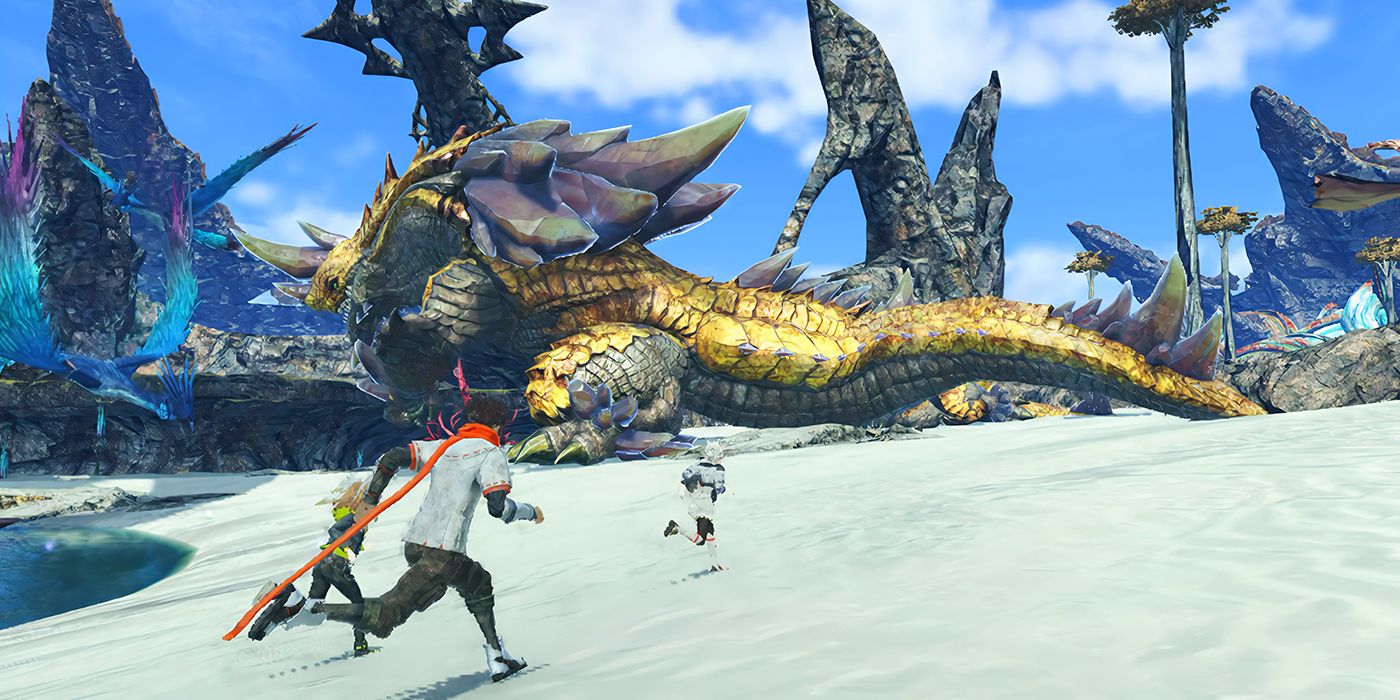Monolith Soft has created an innovative open world map in Xenoblade Chronicles 3 that other JRPGs should take inspiration from. Following the release of the Xenoblade Chronicles Definitive Edition remaster in 2020, many fans were curious about what the third entry of the Chronicles saga would look like. After years of waiting, Xenoblade Chronicles 3 is finally here, and it features an ambitious open-world design that is the blueprint for future JRPG titles.
When the Chronicles saga first made its debut on the Nintendo Wii in 2010, the open-world game was critically praised for its emotional storytelling. The series would return in 2017 with Xenoblade Chronicles 2 which featured an even more epic campaign as well as an overhauled combat system. The game's biggest feature though was the ambitious Blades system, which allowed players to change their team's playstyle on the fly. For Xenoblade Chronicles 3 Monolith Soft put a heavier emphasis on updating the franchise's open-world design to make it more engaging than it's ever been.
Throughout the game's 100-hour journey, Xenoblade Chronicles 3's playable characters globe-trot across a wide variety of exotic biomes. While the series has always been known for its beautiful art direction, the world of Aionios is brought to life with the series' most polished graphics to date. However, there are several important design changes that make Xenoblade Chronicles 3's open world map outshine previous entries, as well as most modern JRPGs.
Xenoblade Chronicles 3 Has An Innovative Open World Design
Compared to previous entries, Xenoblade Chronicles 3 feels like a deeply connected world to the characters that inhabit it. Although small towns and cities are common in any JRPG, in XBC3 players see the growing impact the story is having on everyone in Aionios. As the campaign progresses, players encounter various colonies and can choose to help them through intricate side quests that have to be uncovered. Because these settlements change due to the Xenoblade Chronicles 3 Flame Clock plotline, it encourages players to revisit past locations whenever they can to see how events are impacting characters.
Unlike other open-world JRPGs like Final Fantasy 15, Xenoblade Chronicles 3 also takes steps to make its map feel like a living world with the new Skirmishes feature. As players traverse the diverse terrain of Aionios, they will stumble upon battles that break out between factions. Similar to raids in MMOs, players can choose which side to support and get unique rewards. The feature keeps Xenoblade Chronicles 3's map constantly engaging and makes traversal excitingly unpredictable. It's a refreshing change from many open-world designs past JRPGs have used, which tend to feel more static and disconnected from the rest of the world's levels.
While most JRPGs feature item quests, Monolith Soft has also improved on this with the Xenoblade Chronicles 3's Collectopaedia Card system. Instead of having to pick up individual side missions, players can instead carry around a set of bingo-style cards, which list the series of items characters in the colonies need. Players can then fill up the checklist, and redeem the card from a menu to collect their rewards. This accessible integration makes scavenging items scattered throughout the map an addicting gameplay element that isn't tedious. Even though a lot of the game's features are improvements of already common features in many JRPGs, Xenoblade Chronicles 3 brings the whole open world design together in a polished package that should be the blueprint for future game's in the genre. Its map not only feels alive but everything ties back into the story and characters.


